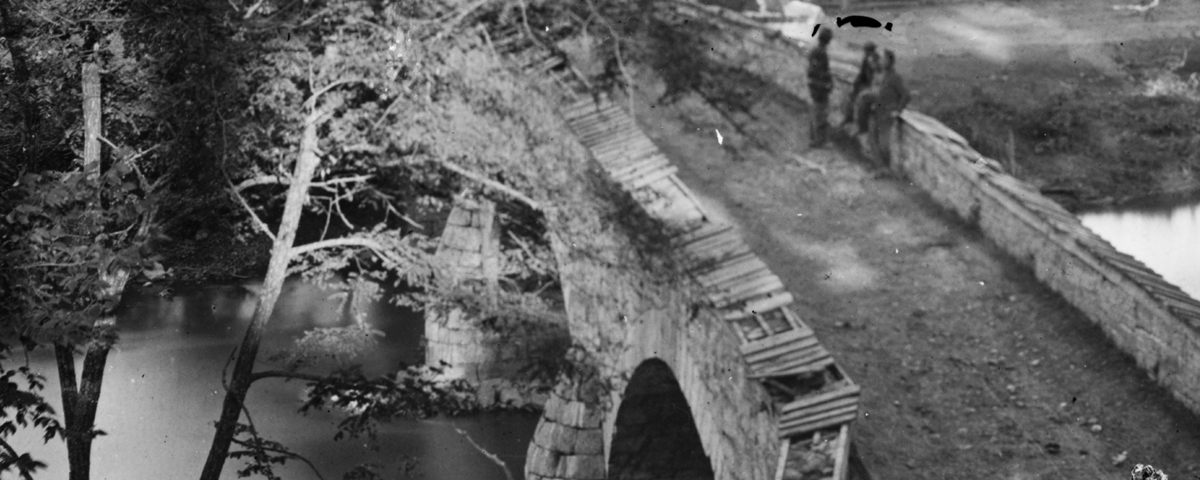Primary Sources: Bloodletting at Burnside Bridge
September 17, 1862. Confederates defending the stone bridge on the lower end of the battlefield at Antietam were outnumbered nearly 4 to 1—but held the high ground. Brig. Gen. Robert Toombs’ Brigade, which included the 2nd and 20th Georgia, fired into Maj. Gen. Ambrose Burnside’s Federals as they attempted to cross the span. Lt. Theodore Fogle of the 2nd Georgia told his family about it in a letter 10 days later.
At a bridge on the Antietam Creek our Regiment & the 20th Ga., in all amounting to not over 300 muskets held them in check for four hours & a half & then we fell back only because our ammunition was exhausted, but we suffered badly, eight cannon just five hundred yards off were pouring grape shot, shell and cannister into us & our artillery could not silence them. We held our post until Major Harris (Cousin William) ordered us to fall back. Our Col. (Col. Holmes of Burke County Ga) was killed about half an hour before. He was as brave a man as I ever saw. He was perfectly cool & calm & did not seem to know what the word danger meant, he had won the confidence of the regiment at the battle of Manassas, poor man he was pierced by three balls after he received his death wound. We could not bring his remains off the field. Three men tried it & two of them were shot down.
I wanted to go with them but I knew it was not right to expose myself in that way. Col. Holmes was dead & and it was not right for us to risk our lives simply to get his body off the field. Maj. Harris is a brave man but I don’t think is quite cool enough. He was struck on the arm but the ball did not enter, only gave him a pretty bad bruise. We went into the fight with only 89 muskets & had eight officers & 35 men killed & wounded. So many of the men were shot that the officers filled their places & loaded & fired their guns. I fired only once & that was at a bunch of six or seven Yankees not more than 60 yards off. The musket was a smooth bore & loaded with a ball & three buckshot. I won’t say whether I hit my mark or not. Mother, I’ll give you the benefit of the doubt.”
—Lieutenant Theodore T. Fogle
2nd Georgia Infantry, Toombs’ Brigade,
Army of Northern Virginia, CSA
Bridge over Troubled Water:
The son of a Georgia dentist, Fogle had himself studied dentistry in Baltimore, though he had earlier received training at Georgia Military Institute in Marietta. He was still in Baltimore but quickly enlisted in April 1861.
As fighting heated up at the Sunken Road about 10 a.m., Burnside was ordered to attack the bridge. But Confederate resistance was so strong three separate attacks were required to finally capture it.
Once the Federals captured the bridge, worse fighting lay ahead. Five times as many casualties occurred in the final thrust toward Sharpsburg than at the bridge as A.P. Hill’s Confederates arrived and joined the fight.
This article originally appeared in the September 2015 issue of America’s Civil War.





